Stakeholder information
Learn more about the policy context around European Digital Credentials for Learning, its key concepts and other key updates.
EU citizens are increasingly using digital tools to learn and apply for jobs. Digital Credentials have become an important tool for EU citizens to document their skills and learning achievements. Recent analysis of the digital credentials market has however found that the market is fragmented with many actors with competing standards, low interoperability between standards, and great variability in the legal admissibility of digital credentials between Member States.
In the Digital Education Action Plan adopted in January 2018, the European Commission highlights the importance of providing a digital infrastructure to issue digitally-signed credentials, encouraging the wider use of digital credentials in the EU. In the Europass Decision adopted in April 2018, the European Commission was tasked with developing a digital framework to document, share and verify learning achievements (including skills and qualifications) from formal and non-formal setting, leading to the development of the European Digital Credentials for Learning Infrastructure (EDCI).
EDCI plays a central role in the European Commission’s wider agenda for education, skills, and digital data. The European Skills Agenda launched in July 2020 highlights EDCI as an important tool to create flexible lifelong-learning pathways for EU citizens. Finally, the European Strategy for Data adopted in February 2020 calls for the creation of a Common European skills data space and for Member States to prepare high-quality data on qualifications and learning outcomes as part of their plans to develop digital credentials.
The main goals of the European Digital Credentials for Learning Infrastructure is to promote:
(1) standardisation,
(2) interoperability,
(3) legal validity for digitally-signed credentials in Europe.
To achieve these goals, the Commission has decided to integrate EDCI with the Europass Platform, another successful tool supporting the integration of the EU skills and job market. Used by millions of users each year, the Europass platform allows job seekers to document their skills and work experience, store relevant documents, share their CV with employers and search for new learning opportunities in the EU. A new version of the Europass platform was launched in July 2020 in an effort by the European Commission to reduce unemployment in the EU and provide tools to EU citizens to search for jobs.
A European Digital Credential for Learning documents multiple aspects of the outcomes of learning. Organisations can play roles in the learning and credentialisation process, such as by:
- delivering activities,
- conducting assessments,
- awarding achievements forming part of a complex credential, or
- acknowledging entitlements received by the credential holder.
These functions are all clearly represented in the credential meta-data and can be visualised in the EDC Viewer.
The European Digital Credentials for Learning Infrastructure allows credential issuers to delegate the sealing role to third parties. Signing a digital credential on behalf of another organisation is called mandated issue, and this is familiar practice in cases where, for example, a national body such as a Ministry of Education or a parent organisation of an awarding body, seals a credential on behalf of the institution that officially issues it. In other cases, it may be a technology provider that, from within its system, formally seals credentials issued by its education and training provider client.
When the issuing and sealing organisations are different, these roles are clearly distinguished in the EDC Viewer, as shown on the illustration below.
The EDC Issuer tool is also built to safeguard against fraud, and in every case will insert institutional data, such as name, country and legal identifier (usually the institution’s VAT number) from the sealing organisation’s electronic seal. If these pieces of data are different in the credential file the issuer uploads for sealing, the data provided in the file will simply be replaced with data from the Seal.
If an institution wants to issue legally admissible digital credentials that pass the EDC Seal verification check, it must acquire an advanced or qualified electronic seal, and once a credential is sealed with that e-Seal, it cannot be tampered with without detection – the slightest change in the file data will result in the e-Seal verification check failure. Read more about Verifying European Digital Credentials for Learning.
There are various different practices across Europe to identify credential recipients and to guarantee sufficient verification of individuals who may be presenting their credentials to third parties, such as prospective employers, and in some countries the use of certain personal identifiers (such as date of birth) violate privacy protection.
To comply with national legislations and accommodate existing credential issuing practices, without making many of these data fields obligatory, the European Learning Model (insert link to ELM) was devised to enable the provision of a wide range of personal identifiers (e.g. national ID number, date of birth or address of residence) and attributes (e.g. gender or country of citizenship). Although we advise providing enough information to enable strong ID verification, the only pieces of compulsory data about credential holders is their name and their email and/or credential wallet address. Below is an illustration how credential holder data is displayed in the EDC Viewer.
Learning achievements are a recognised and/or awarded set of Learning Outcomes of an individual describing the acquisition of knowledge, skills or responsibility and autonomy. Very often learning achievements are influenced by Learning Activities, proven by Assessments, and they can indicate Entitlements that the credential holder has received as a result of their achievement.
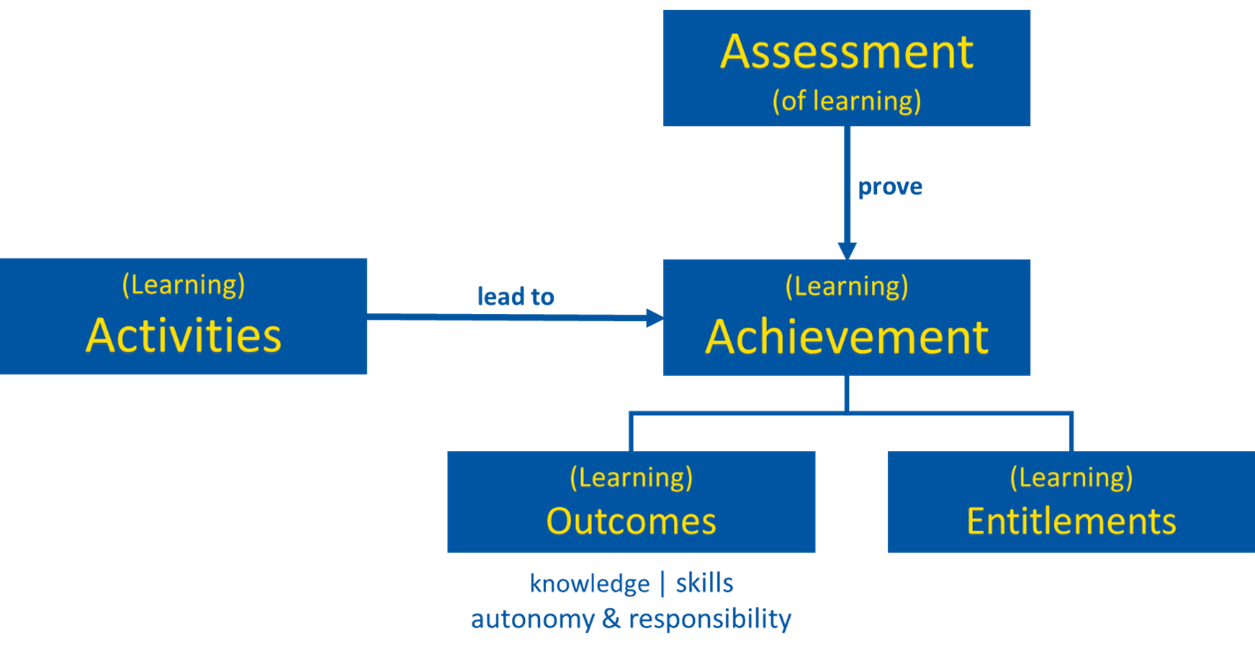
Achievements (e.g. a Master degree, as shown on the illustration below) may also have components of sub-achievements, in our example case the subjects of the degree programme.
A learning activity is any process which leads to the acquisition of knowledge, skills or responsibility and autonomy. Just like learning achievements, activities may also have components of sub-activities, and they can be described in terms of activity start and end dates, workload, activity modes and types, as well as languages of instructions.
Assessments are processes establishing the extent to which a learner has attained particular knowledge, skills and competences against criteria such as learning outcomes or standards of competence. Assessment results are expressed in Grades that are an individual’s score from within a grading scheme that can be described in detail to make grades transparent and comparable. Other properties of an assessment, including mode, language and method can be described as it is shown below.
An entitlement is principally a right, e.g. to practice a profession, take advantage of a learning opportunity or join an organisation, as a result of the acquisition of knowledge, skills, responsibility and/or autonomy. Entitlements, by their status, can be prospective or actual. The screenshots below illustrate how entitlements’ details are displayed in the EDC Viewer.
Should you have further questions regarding European Digital Credentials for Learning or the European Learning Model, we invite you to contact us at: EMPL-ELM-SUPPORT@ec.europa.eu

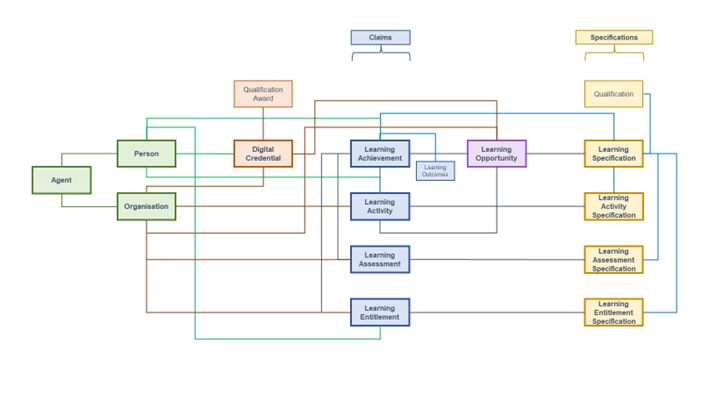
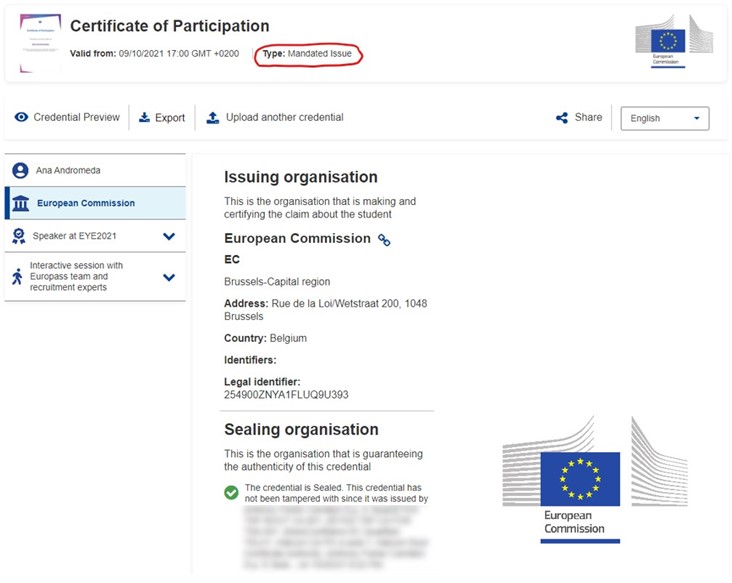
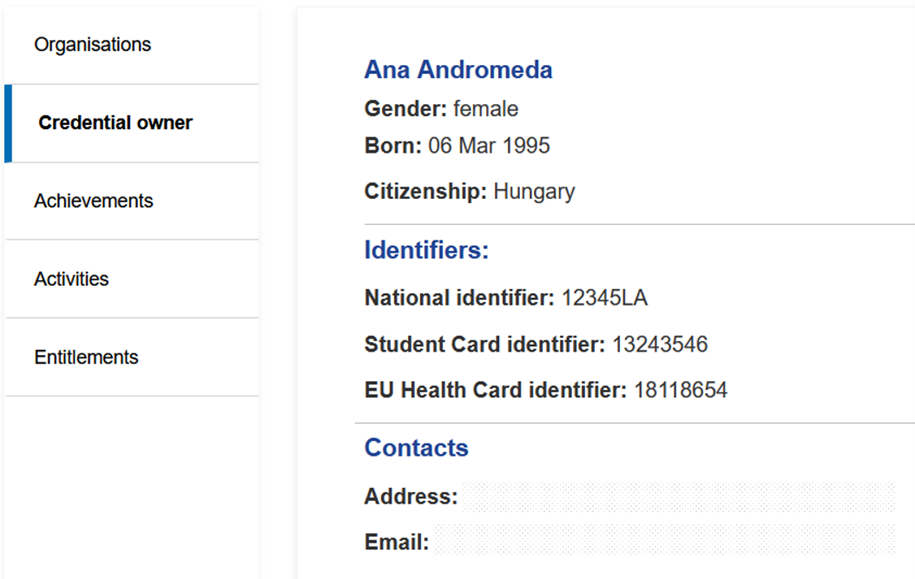
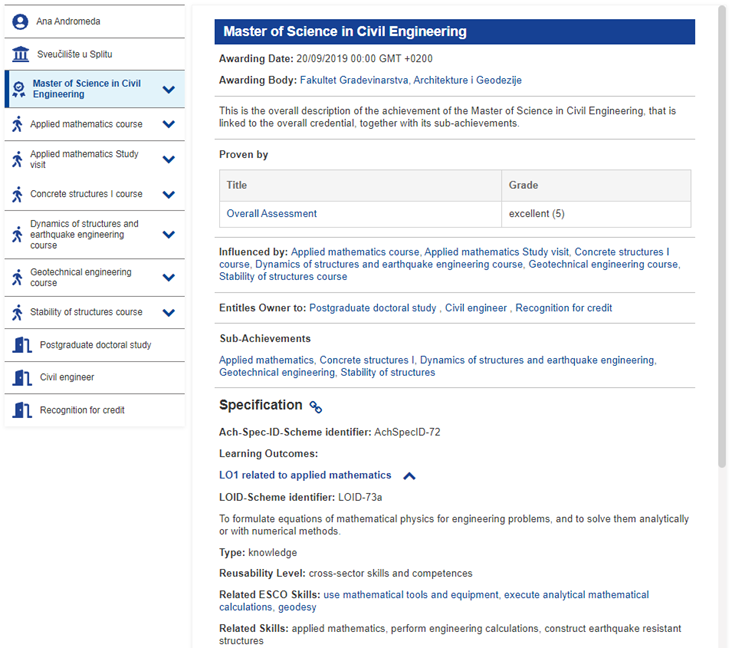
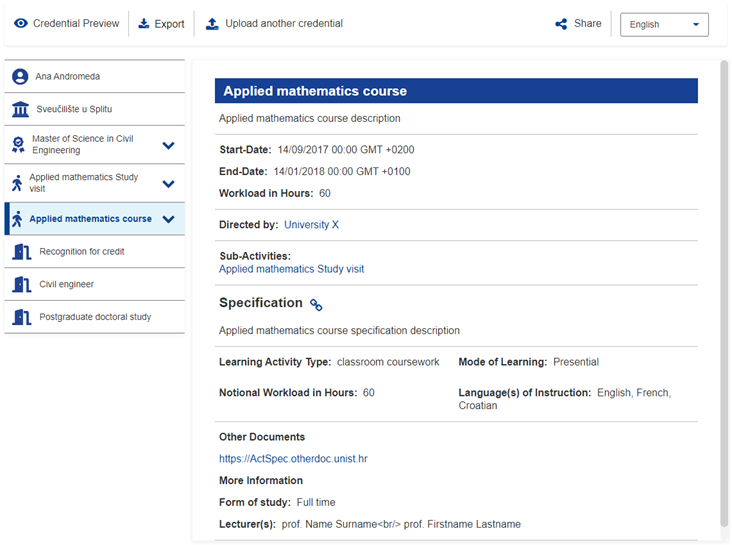
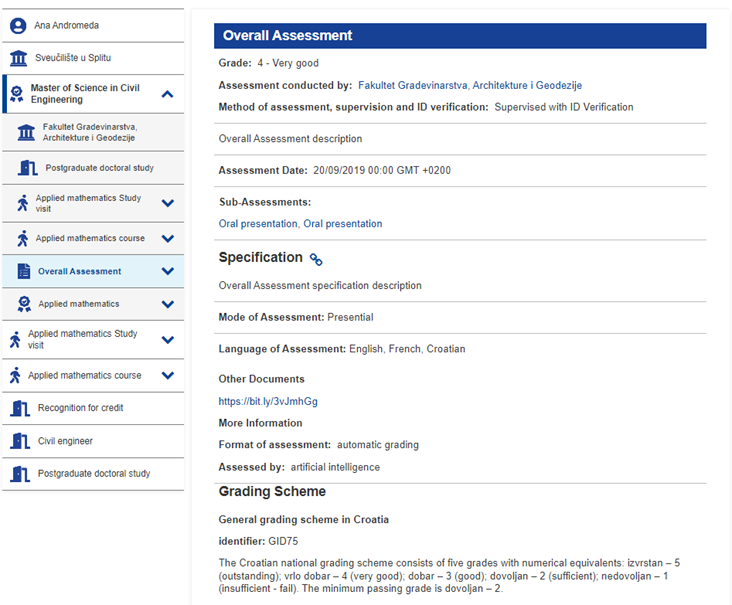
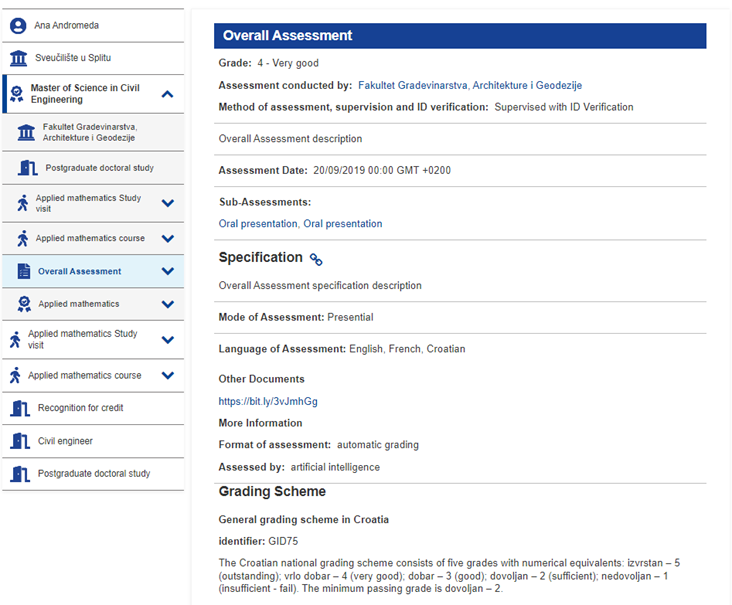

 Facebook
Facebook
 Twitter
Twitter
 Linkedin
Linkedin